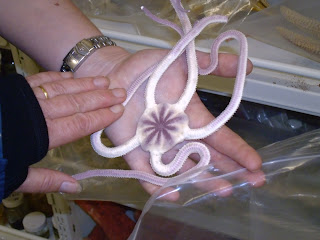Conservation Responses to endangered Species
I learned interestingly that DOC have not the luxury of using traditional scientific method when faced with dealing to the dilemma of endangered species like the native bird Hihi located on small off shore islands. Can't really ethically use part of the population as a control group while using management practices such as supplementary feeding (predator proof habitat but still numbers weren't flourishing so looked at model of limitation of insufficient year round food on these scrubby islands) on the rest because the population numbers are so small, that any losses in the control group could be devastating.
Consequently DOC utilises an alternative approach called adaptive management which is like a medical model where they treat all the patients, but carefully observe and collect data from the prescribed treatments in an ethical way to improve knowledge and then allocate resources where it would make the most difference. E.g. did "on-off" experiments supplementary feeding (sugar water) the Hihi on Mokoia Island (1994) for 16 days and then unavailable for 12 days. Also feeders were placed on 1/2 the island only during the breeding season as females on nests don't move as much. Results found survival/condition of birds not limited by carbohydrates outside breeding season but survival rates were low and reproduction was limited by carbohydrate availability.
During these supplementary feeding experiments it was noticed that nest mites could build up in Hihi nests which could kill the young chicks. Experiments were conducted to let mites build up to near lethal levels and then the chicks were shifted to new nests and nest boxes.This allowed estimates of broods lost without mite control and they were quite substantial-30%! Subsequently all nests were treated for mite control.
another outcome was that experiments found high levels of fungus in nest boxes (aspergillus fumigalis) and that many dead Hihis had this fungus present.
This adaptable management approach then can minimise risks, use flexible management i.e.with the mites and fungus, using experiment results to manage the population left for a better outcome than previously. finally DOC decided with its limited resources to transfer the Hihi from Mokoia Island back to the more manageable Kapiti Island.





